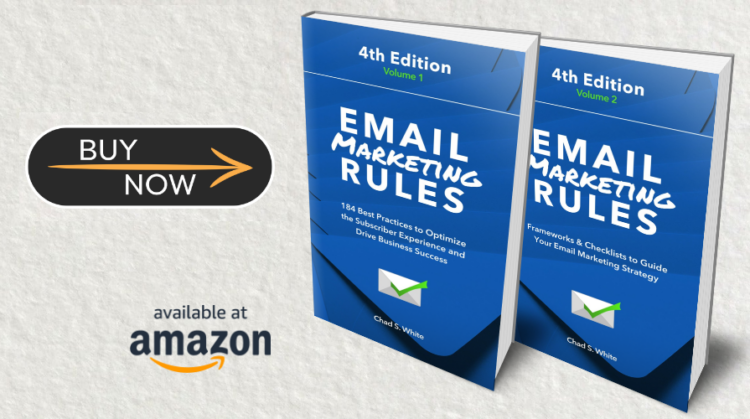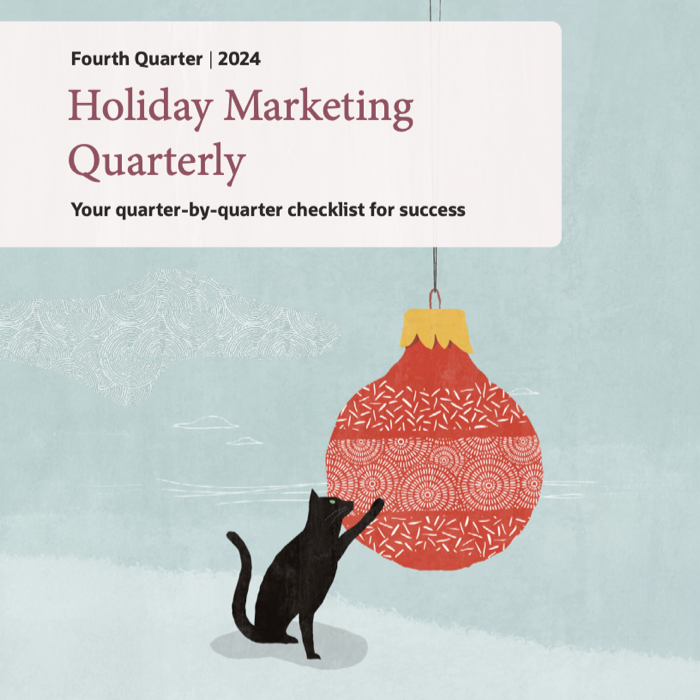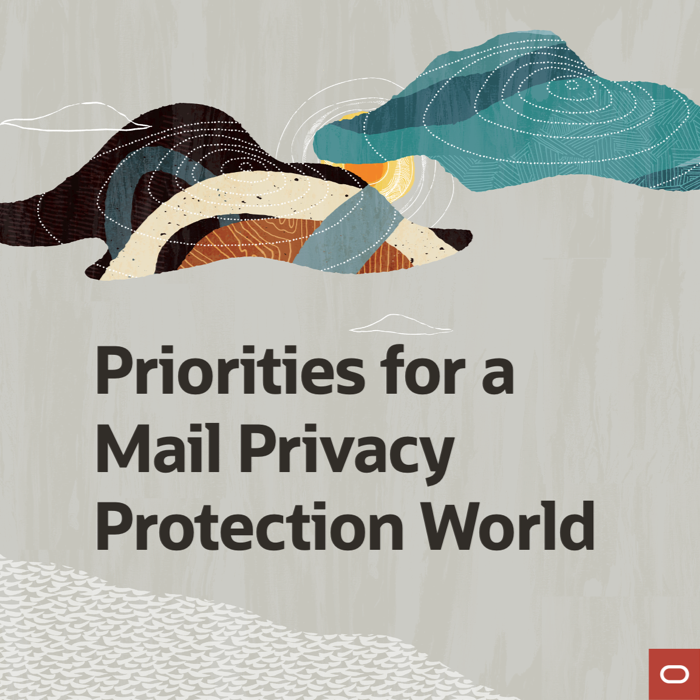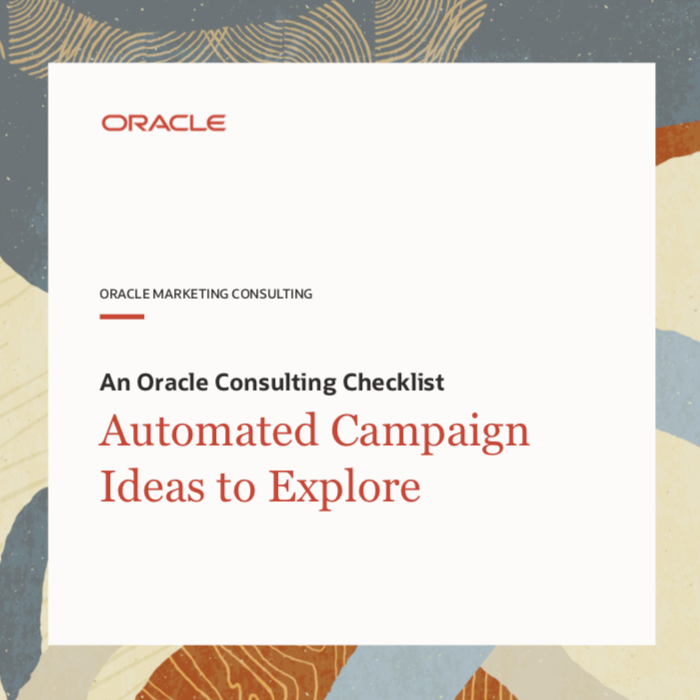5 Secrets to Getting Subscribers to Forward Your Emails
Posted on July 14, 2015
 Social sharing gets a lot of attention—in large part, because it’s relatively easy to measure—but the all but invisible email forward can be just as powerful for brands. Whereas social sharing is public, diffuse, and powerful at driving top-of-the-funnel awareness, email forwards are private, targeted, and excel at driving bottom-of-the-funnel action.
Social sharing gets a lot of attention—in large part, because it’s relatively easy to measure—but the all but invisible email forward can be just as powerful for brands. Whereas social sharing is public, diffuse, and powerful at driving top-of-the-funnel awareness, email forwards are private, targeted, and excel at driving bottom-of-the-funnel action.
To better understand email forwarding behavior, Litmus used its Email Analytics tool to measure the forwarding activity from more than 400,000 email campaigns. We then analyzed more than 200 campaigns from the most forwarded 1% of emails and compared them to an equal number of campaigns from the middle-of-the-pack median, looking at differences in tactics and email topics.
The findings, detailed in The Viral Email report, sometimes reinforced common sense but other times revealed counterintuitive approaches. In my first monthly column for Marketing Land, I reveal five key tactics for spurring email forwards, including two not included in the report.
>> Read the entire article on MarketingLand.com
#Webinar: ‘How to Make Your Emails Go Viral’ on 7/14 at 11am ET
Posted on July 8, 2015
 We tend to associate “going viral” with social media—in part because it’s relatively easy to see and measure the very public noise of social sharing in terms of likes, favorites, and retweets. However, the much quieter email forward is often a considerably more powerful influencer because its sharing is more targeted, personal, and urgent.
We tend to associate “going viral” with social media—in part because it’s relatively easy to see and measure the very public noise of social sharing in terms of likes, favorites, and retweets. However, the much quieter email forward is often a considerably more powerful influencer because its sharing is more targeted, personal, and urgent.
In this free webinar, Justine Jordan, Marketing Director at Litmus, and I will share insights gained from examining the forwards generated by more than 400,000 email sends. We’ll cover benchmarks for forward-to-open rates, discuss different email tactics for spurring email forwards, and share real-world examples of highly viral emails.
This webinar is ideal for email marketers and designers alike in need of inspiration for getting their emails shared—and how to properly measure viral success.
After registering, you will receive a confirmation email containing information about joining the webinar. The webinar will be recorded and all registrants will receive the slides and recording post-event.
“How to Make Your Emails Go Viral”
July 14, 2015 at 11am ET (8am PT)
With Chad White, Research Director, Litmus (@chadswhite)
And Justine Jordan, Marketing Director, Litmus (@meladorri)
>> Register for this Free Webinar
Shopping Cart Abandonment Gamesmanship
Posted on July 6, 2015
 Consumers are smart. If you play games, they will figure them out, exploit them, and then tell their friends.
Consumers are smart. If you play games, they will figure them out, exploit them, and then tell their friends.
In this Internet Retailer article, Don Davis looks at the results of a Shop+ survey that shows that shoppers—especially millennials—are crafty deal-seekers. For instance, 47% of consumers ages 18-34, and 37% of all shoppers, intentionally leave items in an online shopping cart in hopes that the retailer will come back with a better offer.
I spoke with Don for that article, explaining why offering incentives in shopping cart abandonment emails is a bad practice:
“The biggest problems with including incentives in shopping cart abandonment emails is that they train customers to delay purchases and train them to be more price-sensitive,” I said. “The former causes you to lose sales to competitors, while the later causes you to give away margin needlessly.”
I recommend using cart abandonment emails as a service tool, rather than a promotional tool, in order to avoid teaching your customers bad habits that cost you money. For instance…
>> Read the full article on InternetRetailer.com
8 Keys to Making Your Emails Go Viral
Posted on June 23, 2015
 “It’s the scatter shot of social versus that sniper bullet of the forward.” That’s how I described the difference between the reach-maximizing social share and the conversion-maximizing email forward in an interview with Elyse Dupré of Direct Marketing News about the findings of our Viral Email report.
“It’s the scatter shot of social versus that sniper bullet of the forward.” That’s how I described the difference between the reach-maximizing social share and the conversion-maximizing email forward in an interview with Elyse Dupré of Direct Marketing News about the findings of our Viral Email report.
We spoke at length about the report, which analyzed 400,000+ emails to uncover the secrets of email virality, and today Elyse shared her eight key takeaways for how to make your emails go viral:
- Start by taking a look at your email editorial calendar.
- Concentrate on subscribers’ hierarchy of needs.
- Know what kind of virality you’re hoping to achieve.
- Make it clear that you’re doing something special.
- Include a SWYN call-to-action button.
- Narrow down your audience.
- Keep your content simple.
- Know what types of email are most virality-prone.
>> Read the full article on DMNews.com
The Dangers of Not Regularly Reviewing Your Triggered Emails
Posted on June 19, 2015
 Triggered emails have a reputation for being ‘set it and forget it” programs. Unfortunately, that’s just not true, and it’s becoming less and less true every day.
Triggered emails have a reputation for being ‘set it and forget it” programs. Unfortunately, that’s just not true, and it’s becoming less and less true every day.
As we discuss in our recent “Designed for Success” webinar, there are two compelling reasons to regularly update your triggered emails: (1) quality assurance and (2) optimization.
Because email operates in a dynamic environment of email clients, browsers, and devices and because business goals and assets routinely change, you need to regularly review your emails to avoid:
- Broken links/redirects and old navigation links
- Out-of-date logo and branding
- Out-of-date messaging (benefits, options, etc.)
- Faulty trigger logic
- Broken rendering and functionality because of code support changes at ISPs
Optimization is always important, but it is particularly so right now with triggered emails because of the explosive trend of expanding single triggered emails into a series of emails. That means there’s now much more to test, optimize, and update, such as…
- The number of emails in the series
- The conditions in which the next email in the series is sent (or not sent)
- The timing of not only the first email in the series, but of all the subsequent ones
- The messaging in each email in the series and how they interact with each other
>> Read the entire post on Litmus.com
The Viral Email Report: How to Make Your Emails Go Viral
Posted on June 18, 2015
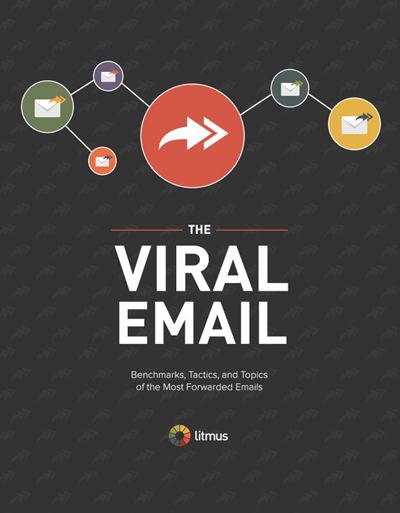 We tend to associate “going viral” with social media—in part because it’s relatively easy to see and measure the very public noise of social sharing in terms of likes, favorites, and retweets. However, the much quieter email forward is often a much more powerful influencer.
We tend to associate “going viral” with social media—in part because it’s relatively easy to see and measure the very public noise of social sharing in terms of likes, favorites, and retweets. However, the much quieter email forward is often a much more powerful influencer.
In our latest research report, The Viral Email, we used Litmus’ Email Analytics to better understand the quiet, often invisible influence of email forwards by analyzing the forwards generated by more than 400,000 email sends. Once we had a good view of the full spectrum of email forwarding and had constructed benchmarks around forward-to-open rates, we analyzed more than 200 emails from among the top 1% of viral emails and another 200-plus emails from around the 50th percentile.
We looked at the tactics and topics of these two groups of emails and compared them—identifying those elements that increase forward-to-open rates. The findings—some of which were truly surprising—highlight a number of opportunities that email marketers have to increase how much their emails are passed along.
>> Download The Viral Email report
The Last Word on May 2015
Posted on June 2, 2015
 A roundup of email marketing articles, posts, tweets, and examples you might have missed last month…
A roundup of email marketing articles, posts, tweets, and examples you might have missed last month…
Must-read articles, posts & whitepapers
Which Digital Channels Are Marketers Best Able to Measure for ROI? (Marketing Charts)
Top Ten Tips to Improved Email Deliverability (Inbox Marketer)
How To Send a Hidden Version of Your Email That Only Apple Watch Will See (Litmus)
Nine Years, 200 Columns – And More to Come (MediaPost)
Insightful & entertaining tweets
@KentMcGovern: “I will sue you if you don’t remove this blacklist” – Things NOT to say to a blacklist operator in the hopes of being delisted.
@bjlgroup: We love creating fun, effective digital work. Here’s our #StarWars email for Asda with a craftily hidden #DarthVader: pic.twitter.com/1cxKVHNYiF
@iamelliot: I like that the anti-email lobby goes from “email is dead” to “there’s far too much email” seemingly without irony http://www.thetimes.co.uk/tto/technology/internet/article4433004.ece
Noteworthy subject lines
The Container Store, 5/18 — 10% off Click & Pickup OR Free Shipping
Vera Bradley, 5/11 — For the Grad who’s going places …
Express, 5/11 — Party season is here!
MoMA Store, 5/29 — Make it Pop! Staff Picks for Father’s Day
NFLshop, 5/27 — #1 Dad? We have a tee for that…PLUS Free Shipping over $50
Under Armour, 5/24 — What Athletes Wear Off The Field
ModCloth, 5/23 — What your closet NEEDS this season…
Garnet Hill, 5/13 — Maxi Dresses (may transform sidewalks into catwalks)
Anthropologie, 5/24 — The place: outdoors. The hour: twilight.
Barneys New York, 5/27 — The Perfect Summer Accessory? A Statement Necklace
ModCloth, 5/27 — Everybody in the pool!
Lululemon, 5/19 — out of office
Clinique, 5/20 — For beach & beyond: swim shirt with sun protection.
Sephora, 5/22 — In Stores now: the 16-piece Sun Safety Kit is here
Gap, 5/24 — 10 vacation-ready looks
MoMA Store, 5/13 —Vacation Beckons! Indispensable Travel Items for Your Summer Jaunts
Express, 5/19 — Tickets booked? Here’s your packing list
Barneys New York, 5/13 — Your Memorial Day Weekend Packing List
AutoAnything, 5/13— Are We There Yet?
J.Crew, 5/29 — All under $100: this month’s 60-second shopping guide
Brooks Brothers, 5/26 — Receive 15% off (for your thoughts).
Pier 1 Imports, 5/19 — Get 20% off headboards that make the bed.
Harley-Davidson, 5/11 — #RollYourOwn. Street Art.
Clinique, 5/30 — Pin your #StartBetter goal for a chance to win.
New posts on EmailMarketingRules.com
My Time as a MediaPost Email Insider: 8 years, 163 columns
Learn the Secrets of Viral Emails at Salesforce Connections on 6/17
What the Verizon-AOL Deal Might Mean for Email Marketers
Try a Cart Abandonment Email ‘Sandwich’
My Time as a MediaPost Email Insider: 8 years, 163 columns
Posted on May 29, 2015
 This month was my last as a MediaPost Email Insider. I’ve decided to move on and explore other opportunities, but I wanted to publicly thank MediaPost for sticking with me for 8 years and 3 months through three job changes and three acquisitions.
This month was my last as a MediaPost Email Insider. I’ve decided to move on and explore other opportunities, but I wanted to publicly thank MediaPost for sticking with me for 8 years and 3 months through three job changes and three acquisitions.
During my time as an Email Insider, I wrote 163 columns. I used these columns to highlight the findings of much of the email marketing research I’ve done over the years, to provoke industry conversations, and to share my thoughts about news and the future of email marketing.
As I look back on all the Email Insider columns I’ve written, here are some of the ones I’m most proud of:
Is Email Marketing Cheap — Or Does It Have A High ROI? (Mar. 24, 2015)
This column explains why your answer to this question—or, more importantly, your boss’s answer to this question—will easily predict the future success or failure of your email program.
More Email Marketing Double-Dog Dares (May 20, 2014)
I’m a huge fan of email testing as a path to more relevant emails and this column is the fourth in a series where I challenge marketers to try some more adventurous tests. The other ones were Once Again, I Double-Dog Dare You! (May 20, 2013), I Double-Dog Dare You! (Apr. 13, 2010) and Why Aren’t We More Daring? (Sept. 18, 2008).
Why You Shouldn’t Ask Your Gmail Subscribers To Re-Tab Your Emails (Aug. 13, 2013)
In recent years, Gmail has shaken up the industry with Priority Inbox, “grid view,” image caching, and—its biggest bombshell—Tabs. In this column, I urged calm in the wake of the launch of Gmail Tabs, which ultimately turned out to be a plus for marketers with good permission practices and processes in place to ensure that they send relevant email.
Six Email Marketing Predictions For 2013 (Jan. 2, 2013)
This was my most shared column, with more than 1,170 shares. Predictions 1, 2, 4, and 5 were pretty spot on. 6 was sort of right. And 3 was just wrong—and sadly, still hasn’t come to pass.
‘Best Practices’ Are Dead (Nov. 9, 2010)
This column was the genesis of my book, Email Marketing Rules. The “Ethical Imperatives” and “Recommended Practices” in this column ultimately became the 10 “Fundamental Imperatives” and 98 “Practice Guidelines” of the first edition. And I used my Email Insider columns to debut several of the concepts I discuss in the second edition, including granted media, the subscriber lifecycle, super-engagement, and confirmed opt-in lite.
When Subscribers Use SWYN, You Win (Oct. 30, 2008)
In this column I coined the term “share with your network,” or SWYN, which awesomely became a common industry term. I was an early advocate of the social sharing of email content and continue to be a strong supporter of email and social working together.
Thanks again to MediaPost for allowing me to be an Email Insider and for putting me in the company of so many of the email marketing industry’s greatest minds.
Learn the Secrets of Viral Emails at Salesforce Connections on 6/17
Posted on May 22, 2015
Join Justine Jordan and me at Salesforce Connections on June 17 at 2:45pm where we’ll be sharing insights from our upcoming report on The Viral Email. We’ll be sharing benchmarks on email forwarding behavior, insights into what causes subscribers to forward emails, and real-world examples of emails from the top 1% of viral emails.
We hope to see you in New York City on June 17!
>> Register for Connections
What the Verizon-AOL Deal Might Mean for Email Marketers
Posted on May 20, 2015
 While all of the buzz around the $4.4 billion Verizon-AOL deal is about adding more content, video, and ad generation to the mobile company’s distribution platform, the acquisition will also likely affect email marketers.
While all of the buzz around the $4.4 billion Verizon-AOL deal is about adding more content, video, and ad generation to the mobile company’s distribution platform, the acquisition will also likely affect email marketers.
AOL is one of the oldest and most experienced inbox providers and, in terms of webmail rendering, is one of the absolute best. Verizon also operates email inboxes under the Verizon and FiOS brand names. Expect consolidation of these systems.
However, on the mobile email side of the equation, AOL is not very strong. Expect Verizon to fix that by bringing their mobile savvy to the table.
With a little investment and some smart marketing, Verizon could likely double AOL’s current email client market share and start to get into the race with Google and Microsoft.
 Email Marketing Rules
Email Marketing Rules



